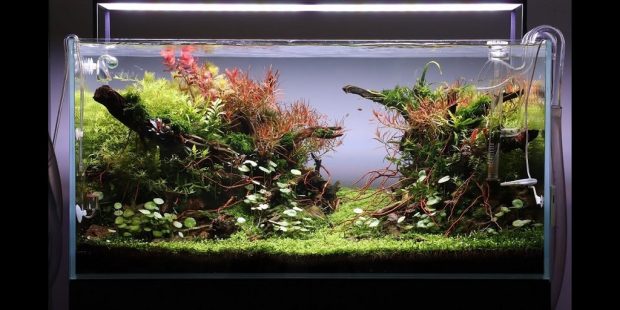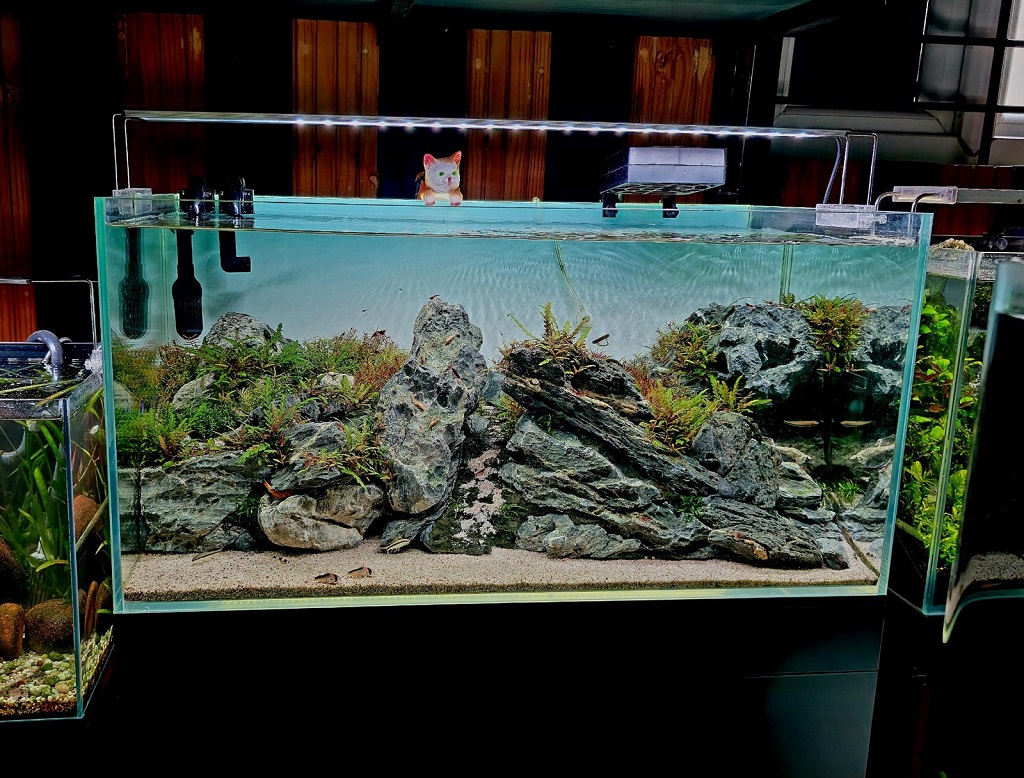
Creating stunning aquascapes for freshwater tanks is an art that blends creativity, science, and nature. With proper planning and a touch of inspiration, any aquarist can turn a plain tank into a captivating underwater landscape. The process is more than arranging rocks and plants; it’s about designing a thriving aquatic environment that enhances your fish’s health and behavior while delivering jaw-dropping aesthetics.
Understand the Essence of Aquascaping
Aquascaping involves more than just decoration. It mirrors the delicate ecosystems found in rivers, lakes, and wetlands. A well-crafted aquascape not only pleases the eye but also supports a healthy, balanced tank environment.
According to Aquarium Co-Op, a popular authority in the aquatics hobby, layout choices should always serve both the visual composition and biological needs of your tank. Proper filtration, CO₂ balance, and plant selection play vital roles.
There are three main aquascaping styles:
- Nature Aquarium (inspired by natural scenery)
- Iwagumi (minimalist, rock-focused)
- Dutch Style (dense, colorful plant arrangements)
Each approach has unique requirements and appeals to different design goals.
Plan Your Layout Before You Start
Start with a sketch or digital mockup. Visualizing your aquascape ensures the end result doesn’t feel chaotic or unbalanced. Focus on the rule of thirds, a visual design principle that brings harmony. Place your focal point—not dead center, but slightly off—to draw attention naturally.
Avoid the temptation to overcrowd. Instead, give each element space to breathe. Depth can be simulated by layering foreground, midground, and background elements.
Professional aquascapers like Takashi Amano stress the importance of flow and rhythm in layout. They compare tank design to a landscape painting—each rock, plant, or driftwood piece contributes to the bigger picture.
Choose the Right Substrate
The foundation of a great aquascape is the substrate. Choose based on your plant types and aesthetic goals. For planted tanks, nutrient-rich substrates like ADA Aqua Soil provide long-term plant nourishment.
Inert options like sand or gravel look clean but lack nutrients. You may need root tabs or liquid fertilizers. Experts recommend layering substrates: a base of nutrient-rich soil, covered with a finer layer of sand or gravel for aesthetics.
Aquascaping often fails when the substrate is too shallow. Aim for at least 2–3 inches at the back to anchor plants and create slope-based depth.
Select Hardscape Elements Carefully
Rocks, driftwood, and other hardscape materials form the skeleton of your aquascape. Don’t grab random decor. Choose elements that work together to form a cohesive theme. Match tones and textures for visual harmony.
Popular choices include Seiryu stone, lava rock, spider wood, and manzanita branches. These not only look stunning but also provide surfaces for beneficial bacteria to grow.
Use odd numbers when grouping rocks or wood. This asymmetry mimics nature and avoids awkward symmetry. Anchor focal pieces securely using aquarium-safe glue or zip ties if needed.
Add Plants With Purpose
Plants are vital. They oxygenate the water, reduce nitrates, and provide shelter for fish. However, not all plants are created equal. Fast-growing stem plants like Ludwigia and Rotala add color quickly, while slower growers like Anubias or Java Fern offer structure and texture.
Layer plants in tiers:
- Foreground: Dwarf hairgrass, Monte Carlo
- Midground: Cryptocoryne, Swords
- Background: Vallisneria, Hygrophila
Research light and CO₂ needs before committing. High-light tanks require CO₂ injection and careful monitoring. For beginners, low-tech setups using hardy plants and moderate lighting can still look stunning.
According to a study published in the Journal of Aquatic Plant Management, balanced light and nutrient levels directly influence plant health and tank stability. Prioritize balance over brightness.
Install Thoughtful Lighting
Lighting is both a practical and aesthetic tool. The right spectrum and intensity support plant growth and highlight colors. Aim for 8–10 hours of light per day using full-spectrum LED fixtures.
Avoid cheap, off-brand lights that flicker or produce limited spectrum. Brands like Fluval, Chihiros, and Twinstar are widely praised for plant tanks.
Timers and dimmers allow you to simulate sunrise and sunset, which reduces stress for fish. Be mindful of algae—too much light or inconsistent schedules lead to outbreaks.
Use CO₂ and Fertilization Smartly
CO₂ supplementation supercharges plant growth, especially in high-tech tanks. Pressurized systems deliver consistency but come at a cost. DIY yeast reactors are budget-friendly but harder to manage.
Liquid fertilizers add macro and micronutrients. Follow a weekly dosing schedule—many aquascapers use the Estimative Index method to prevent deficiencies.
Don’t overdose. Regular water testing ensures proper nutrient levels. Iron, potassium, and nitrogen are common culprits when plants look unhealthy.
Cycle and Stock Gradually
Aquascaping doesn’t end with design. Allow your tank to cycle before adding fish. This process takes 4–6 weeks and stabilizes beneficial bacteria.
Add fish slowly. Overstocking early leads to ammonia spikes and algae blooms. Choose species that complement your stunning aquascapes . Small schooling fish like neon tetras enhance depth and movement. Bottom dwellers like otocinclus help control algae.
Avoid large, disruptive fish that uproot plants or disturb the hardscape.
Featured Snippet: What Makes an Aquascape Truly Stunning?
A stunning aquascape balances form, function, and flow. It tells a story, evokes emotion, and supports life. Key elements include a clear focal point, layered depth, and healthy plant growth. Experts stress that even beginner aquascapes can be beautiful when built with intention and patience. Successful designs often mimic natural scenes—riverbanks, forests, or valleys—inviting both beauty and biodiversity into your tank.
Use quality materials and don’t rush the process. Stunning doesn’t mean complex—it means thoughtful. A tank with three rocks and two plant types can outperform an overstuffed jungle if executed with care.
Expert Tips for Crafting Stunning Aquascapes
- Start small: Practice with a 10–20 gallon tank before attempting complex layouts.
- Avoid straight lines: Let plants and hardscape flow naturally.
- Trim regularly: Healthy tanks are maintained, not abandoned.
- Photograph your progress: Use before-and-after shots to refine your style.
- Research deeply: Use forums like The Planted Tank and stunning aquascapes Love for real-world inspiration.
Read More Also: Reasons To Consider Getting A 3D Printer
Frequently Asked Questions
How long does it take to build a freshwater aquascape?
It can take a few hours to several days depending on design complexity and materials.
Do I need CO₂ injection for aquascaping?
Not always. Low-tech tanks thrive with the right plants and proper lighting.
What’s the best tank size for beginners?
A 20-gallon tank balances ease of maintenance with design flexibility.
Can I use natural rocks and wood from outside?
Only if properly cleaned and tested. Some materials leach harmful substances.
How do I prevent algae in my aquascape?
Maintain stable light, fertilization, and water parameters. Add algae-eating fish or shrimp.
What are the best fish for aquascaped tanks?
Tetras, rasboras, otocinclus, and dwarf cichlids are popular choices.
How often should I trim aquarium plants?
Every 1–2 weeks depending on plant growth rates and tank lighting.
Read More Also: Five Popular Online Therapy Sites To Know
Final Thought
Creating stunning aquascapes for your freshwater tank is a deeply rewarding journey. It combines artistic vision with ecological stewardship. With thoughtful planning, quality materials, and a bit of patience, anyone can build a breathtaking underwater world. Stay curious, experiment often, and never rush the process. The results speak for themselves and your fish will thank you.

